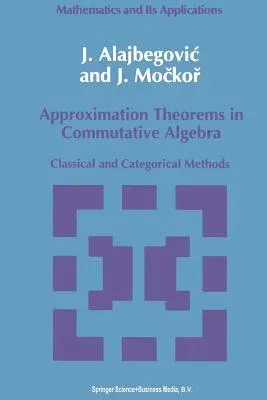J Alajbegovic
(Author)Approximation Theorems in Commutative Algebra: Classical and Categorical Methods (Softcover Reprint of the Original 1st 1992)Paperback - Softcover Reprint of the Original 1st 1992, 5 November 2012

Qty
1
Turbo
Ships in 2 - 3 days
In Stock
Free Delivery
Cash on Delivery
15 Days
Free Returns
Secure Checkout
Part of Series
Mathematics and Its Applications
Print Length
330 pages
Language
English
Publisher
Springer
Date Published
5 Nov 2012
ISBN-10
9401052042
ISBN-13
9789401052047
Description
Product Details
Authors:
Book Edition:
Softcover Reprint of the Original 1st 1992
Book Format:
Paperback
Country of Origin:
NL
Date Published:
5 November 2012
Dimensions:
23.39 x
15.6 x
1.85 cm
ISBN-10:
9401052042
ISBN-13:
9789401052047
Language:
English
Location:
Dordrecht
Pages:
330
Publisher:
Weight:
494.42 gm

